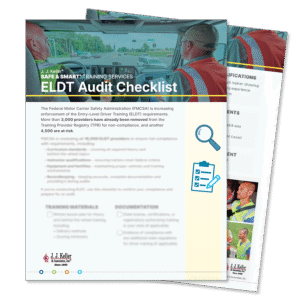Conditions for earning a profit in trucking are cyclical in nature. When freight is plentiful, rates tend to rise — and truckers buy more trucks to take advantage. At some point, however, freight levels decline and there are too many trucks available to haul it. Then, rates go down, and some truckers leave the industry until the supply and demand cycle equalizes again. Rinse and repeat.
For more than a year, we’ve been in an “up” cycle. Spot rates rose first, as they always do, and truckers responded by buying more trucks. In addition, record numbers of new carriers, most of them one-truck outfits, were registered in 2021. Contract rates followed suit, and carriers reported record-setting quarterly and annual results.
A shortage of parts and components, especially semiconductors, meant manufacturers couldn’t build trucks fast enough to satisfy demand (currently the wait time for a new truck is close to 11 months). Buyers took whatever was available, driving inventories of used trucks to record low levels.
The dearth of available trucks had an effect on the freight market, prolonging the “up” cycle of more freight and higher rates. And so, the good times went on and on.
Now, however, you’d better make sure your seat belt is fastened, because the ride is about to get rough.
The first indication of change was spot rates. When freight is placed on the open market, rates are more volatile. When freight (demand) outgrows capacity (supply), rates go up. However, that situation has been reversing for a couple of months now.
According to DAT Trendlines, spot loads posted on DAT’s board increased 2.2% in March compared to February. That’s good.
At the same time, the number of trucks looking for loads on DAT boards increased 29.0%. That’s not good.
Spot rates for van loads fell 2.2% in March and have already fallen nearly that far in April. Refrigerated rates are worse, falling 3.3% in March. Only flatbed loads have increased, by 6.9% in March. That’s mostly a reflection of the season.
Over at Truckstop.com, similar results are being reported. The site reported that its Market Demand Index, the ratio of loads to trucks in their system, fell to its lowest level since December 2020.
On the contract side, the downturn isn’t as evident … yet. The American Trucking Associations (ATA) reported that its for-hire Truck Tonnage Index rose 2.4% in March, the eighth straight month of improvement. ATA members tend to be larger carriers who primarily haul contract freight.
“Clearly, contract freight was solid in March, witnessing the largest sequential gain since May 2020,” said Bob Costello, chief economist for ATA.
Cass Information Systems reported an increase of 2.7% in its March Cass Freight Index for Shipments. The index for expenditures showed an increase of 33.2% over spending for shipping a year ago in March 2021. The Cass Indexes reflect multiple modes of shipping, including trucking, pipeline, rail, air and ship.
Then there’s the cost of fuel. Diesel prices are not helping the situation for anyone.
In March 2020 the national average price for diesel fuel was $2.85 per gallon, and it fell to less than $2.40 as COVID-19 restrictions reduced demand. By March 2021, the average gallon had risen to $3.07. In March 2022 it had risen to $5.25, an increase of more than 71%.
The Russian invasion of Ukraine hasn’t helped the global price of petroleum. Russia supplies roughly 11% of the world’s supply, competing with Saudi Arabia for second place (the U.S. is first). Sanctions designed to deter Russian aggression have pushed diesel prices higher. The machines of war, including tanks, planes and ships, use incredible amounts of petroleum, further tightening world supply.
Another issue that is likely to impact the freight situation with greater intensity is inflation. In February the Consumer Price Index had risen 7.9% over the past 12 months, a rate not seen since the 1980s. The number for March is expected to be higher.
Petroleum prices certainly contribute to rising prices but aren’t responsible for all of it. Not counting food and energy, the consumer price index (CPI) is still up 6.4%.
It’s about to get worse.
The agricultural regions of Ukraine grow much of the grain used in Europe. As war continues, farming equipment, feed and fertilizer may be difficult to obtain, and crop yields might suffer. Additionally, Ukraine exports minerals, another industry that’s interrupted by war. Fifty percent of the world supply of neon, a substance necessary for the manufacture of semiconductors, comes from Ukraine.
Now, we circle back to COVID-19 and its birthplace, China. The COVID “Stealth Omicron” variant BA.2 is surging through the country. The research firm Gavekal Dragonomics, which provides analysis and coverage of China’s economy, reported that 87 of China’s 100 largest cities by economic output are under restriction, with many shut down entirely. Shanghai, a city of more 25 million people, was completely locked down, although some restrictions have since eased at the time of this writing. Manufacturing in many sectors has stopped, as has transportation of products.
Just as in Ukraine, spring planting could be severely impacted. People in lockdown situations can’t get to fields, and the availability of farming supplies may be restricted.
None of this is good news for inflation or for trucking. Industry analysts are poring over the data, trying to predict when the market will enter a down cycle and how severe it will be. An April 14 posting by Freightwaves carried the headline, “Truck drivers are facing another bloodbath.” An April 3 posting on the “Wolf Street” website, owned by analyst Wolf Richter, noted that the “next phase in trucking boom-bust cycle has started.”
An ACT press release on April 18 stated that the freight market was transitioning from mid- to late-cycle. ACT President and Senior Analyst Kenny Vieth thinks predictions of doom and gloom may be overblown.
“To the extent that there’s a supply demand relationship correction, based on what we know right now, we think that it’s likely to be very shallow,” he said.
Whether the coming downturn is a “bloodbath” or a “shallow correction,” the consensus is that conditions in trucking are about to get tougher.
How bad it gets and how long it lasts will play out in coming months.
Cliff Abbott is an experienced commercial vehicle driver and owner-operator who still holds a CDL in his home state of Alabama. In nearly 40 years in trucking, he’s been an instructor and trainer and has managed safety and recruiting operations for several carriers. Having never lost his love of the road, Cliff has written a book and hundreds of songs and has been writing for The Trucker for more than a decade.














